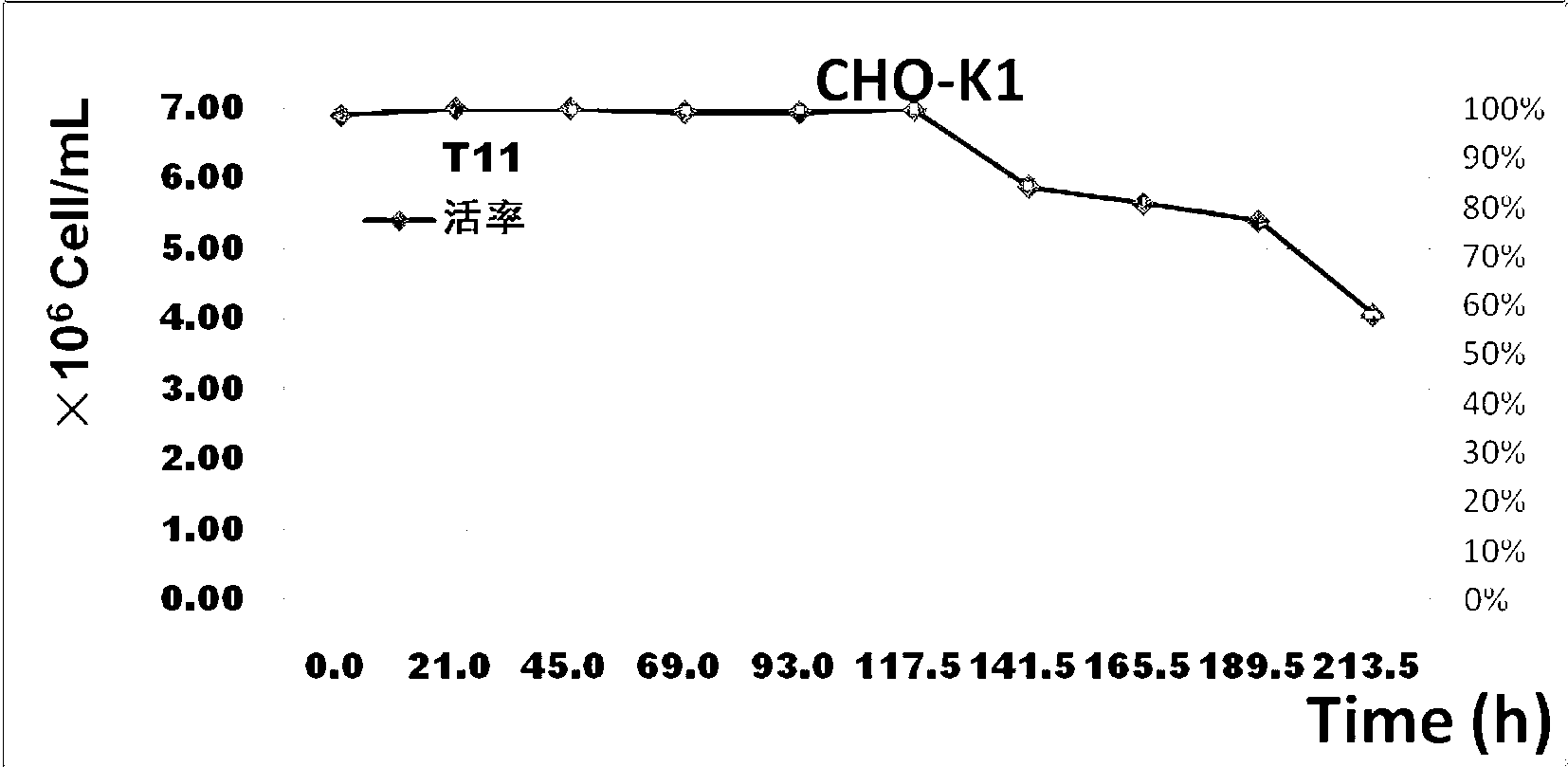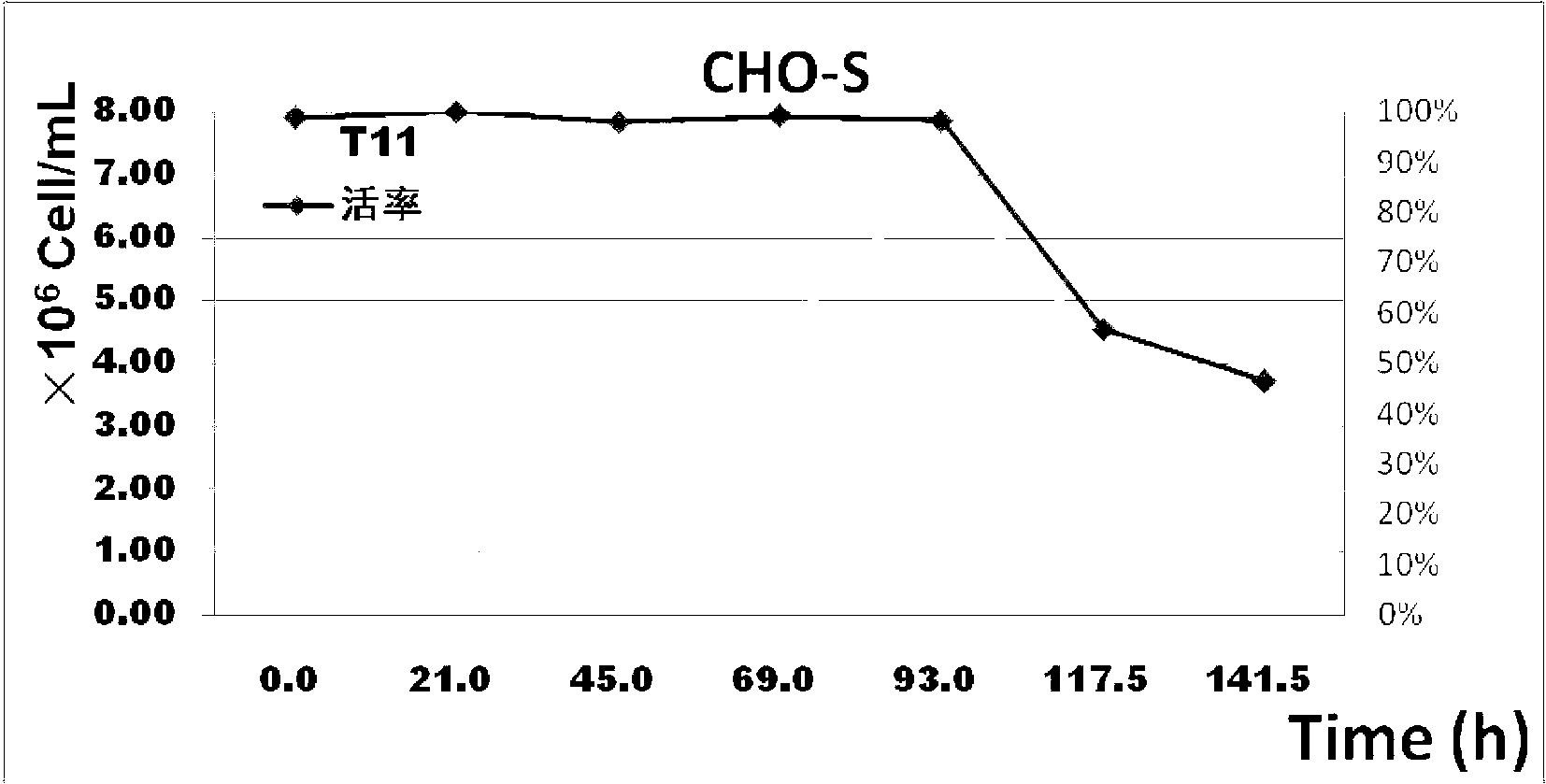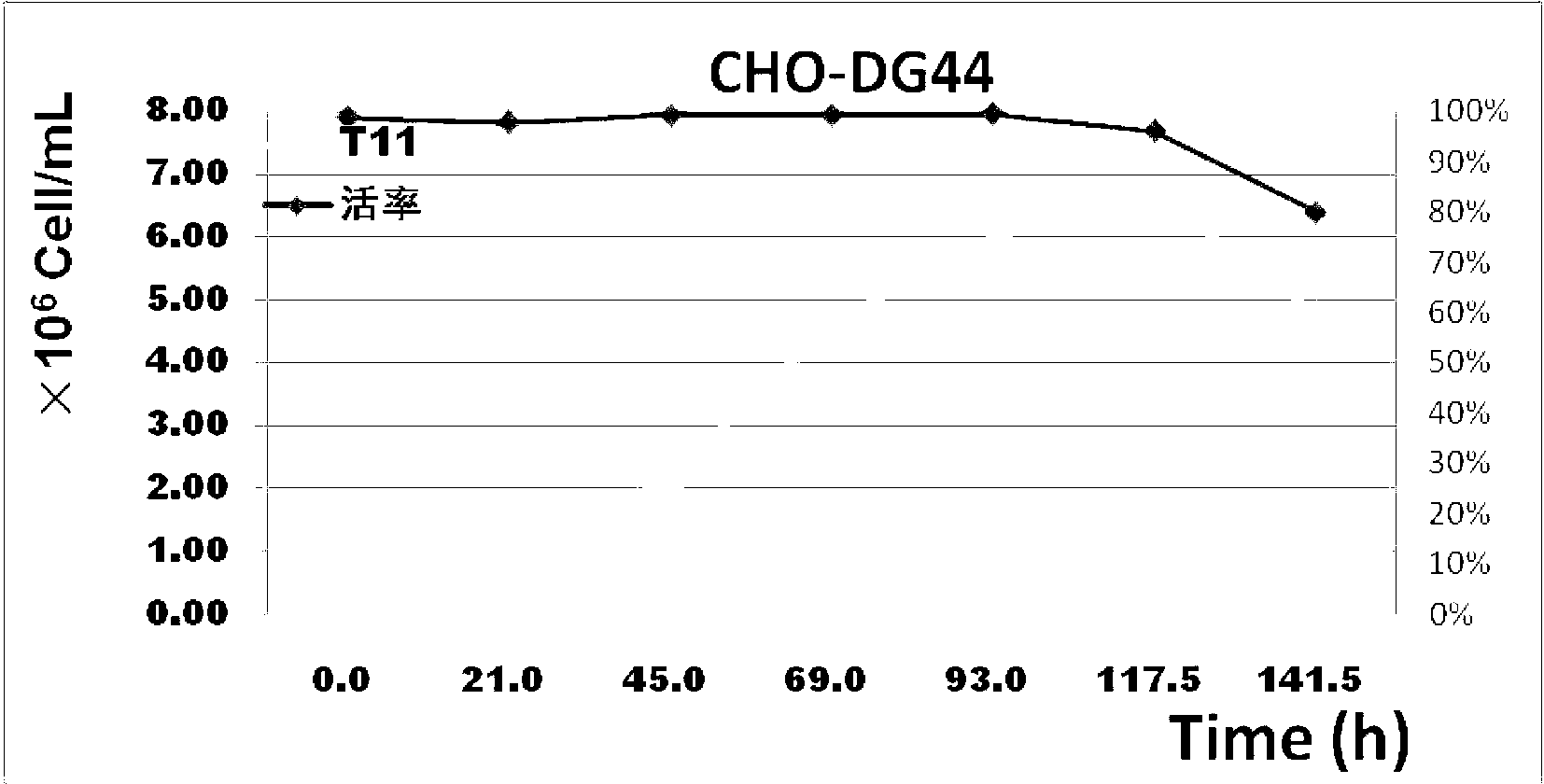Serum-free and protein-free all-chemical-component-definition culture medium for supporting CHO high-density suspension growth
A serum-free medium and chemical composition technology, applied in the field of cell engineering, can solve the problems of poor nutritional balance, complex composition, influence, etc., and achieve the effects of low cost and long maintenance time.
- Summary
- Abstract
- Description
- Claims
- Application Information
AI Technical Summary
Problems solved by technology
Method used
Image
Examples
Embodiment 1
[0042] Medium preparation
[0043] The basic components of serum-free medium are divided into 10 groups of concentrated solutions:
[0044] S1 is an inorganic salt solution, a 50X concentrated solution
[0045]
[0046] S2 is a trace element, 5000X concentrate
[0047]
[0048] S3 is amino acid solution, 10X concentrate
[0049]
[0050]
[0051] S4 is L-tyrosine solution, 100X concentrate
[0052]
[0053] S5 is carbon source and other organic molecules
[0054]
[0055] S6 is L-glutamine solution, 40X concentrate
[0056]
[0057] S7 is vitamin concentrate, 3500X concentrate
[0058]
[0059] S8 is folic acid solution, 200X concentrate
[0060]
[0061] S9 is riboflavin solution, 1500X concentrate
[0062]
[0063] S10 is sodium bicarbonate solution, 100X concentrate
[0064]
[0065] Add the above-mentioned concentrated culture to a 2L container in turn, prepare 1X liquid medium and name it as T11 medium, adjust the osmotic pressure to between 270~275mosm with 5M NaCl and use 7.5% NaHCO 3 O...
Embodiment 2
[0067] Cell culture
[0068] Prepare the medium and place it in a 37°C water bath for 30 minutes, then take it out for use; take one each of CHO-K1, CHO-S, CHO-DG44 and CHO-DUKX-B11 to recover to DMEM containing 8% FBS / F12 medium, after expansion for two generations, spare;
[0069] Use 5.0X10 to recover the above various cells 5 The density of cells per milliliter was inoculated into a 125mL Erlenmeyer flask containing 25mLT11 medium, and the concentration of FBS (fetal bovine serum) in the medium was maintained at about 4%; the Erlenmeyer flask was placed in 5% CO 2 Culture in a shaker culture at 37 degrees, rotating speed 120rpm; count cells every day, when the cell density is greater than 1.5X10 6 When the density of cells per milliliter is 5.0X10 5 The cell density per milliliter was passed to a new 125 mL Erlenmeyer flask, and the FBS concentration in the medium was maintained at about 1%; this was repeated until all the serum was removed by centrifugation and passage after 3...
Embodiment 3
[0072] Cell culture comparison with other companies’ media
[0073] Acclimatize CHO-K1 cells to Life technologies / GIBCO CD-CHO medium and Thermofisher / Hyclone CDM4CHO medium according to the method in Example 2;
[0074] Take the respective domesticated CHO-K1 cells for parallel experiments; use CHO-K1 to 3.0X10 5 The density of cells per milliliter is inoculated into a 500mL Erlenmeyer flask containing 150mL; all Erlenmeyer flasks are placed in 5% CO 2 Cultivate at 37 degrees in a shaker culture, rotate at 120 rpm, sample and count cells every day, and use trypan blue staining to calculate cell viability. Maintain cell culture, when the viability rate drops and the density of viable cells is lower than 2.0X10 6 The cell density per milliliter terminates the experiment in the group. The final experimental results found that the CHO-K1 in the CD-CHO experimental group reached a peak of 4.24X10 on the 4th day after vaccination. 6 The density of cells per milliliter, the cell density ...
PUM
 Login to View More
Login to View More Abstract
Description
Claims
Application Information
 Login to View More
Login to View More - R&D
- Intellectual Property
- Life Sciences
- Materials
- Tech Scout
- Unparalleled Data Quality
- Higher Quality Content
- 60% Fewer Hallucinations
Browse by: Latest US Patents, China's latest patents, Technical Efficacy Thesaurus, Application Domain, Technology Topic, Popular Technical Reports.
© 2025 PatSnap. All rights reserved.Legal|Privacy policy|Modern Slavery Act Transparency Statement|Sitemap|About US| Contact US: help@patsnap.com



